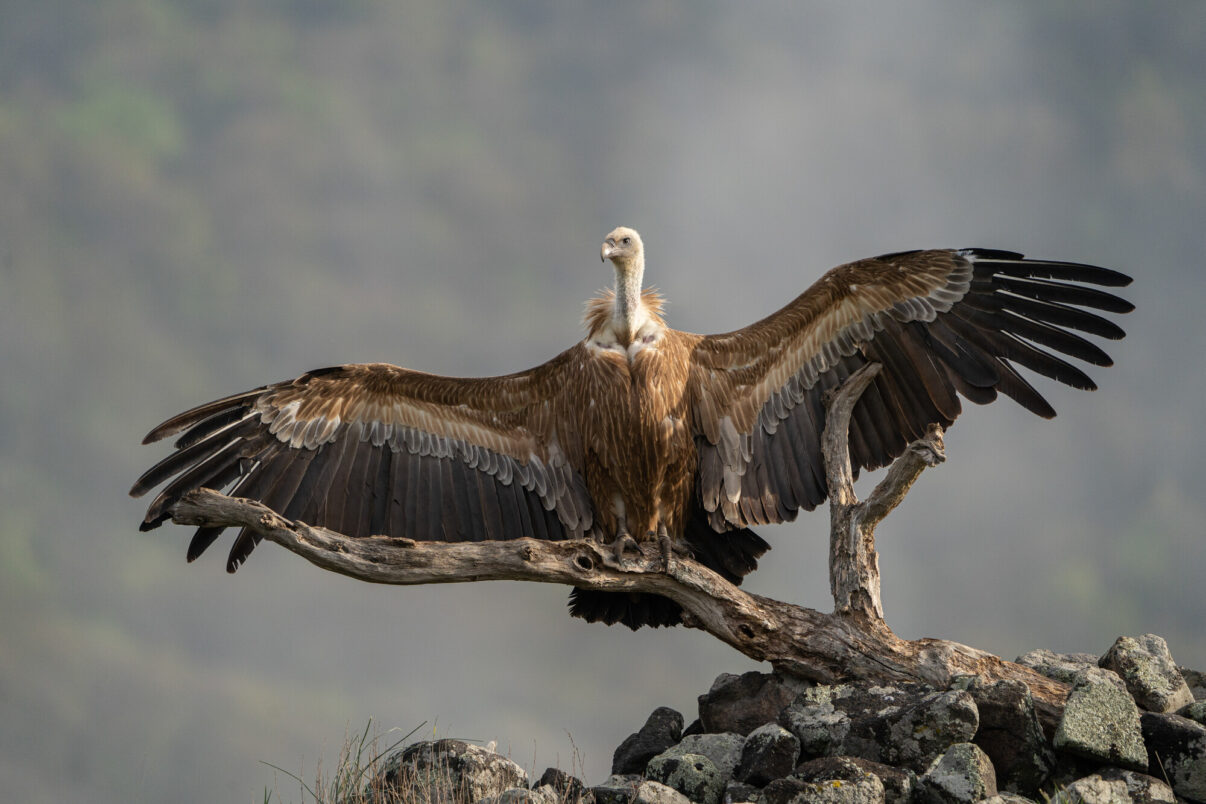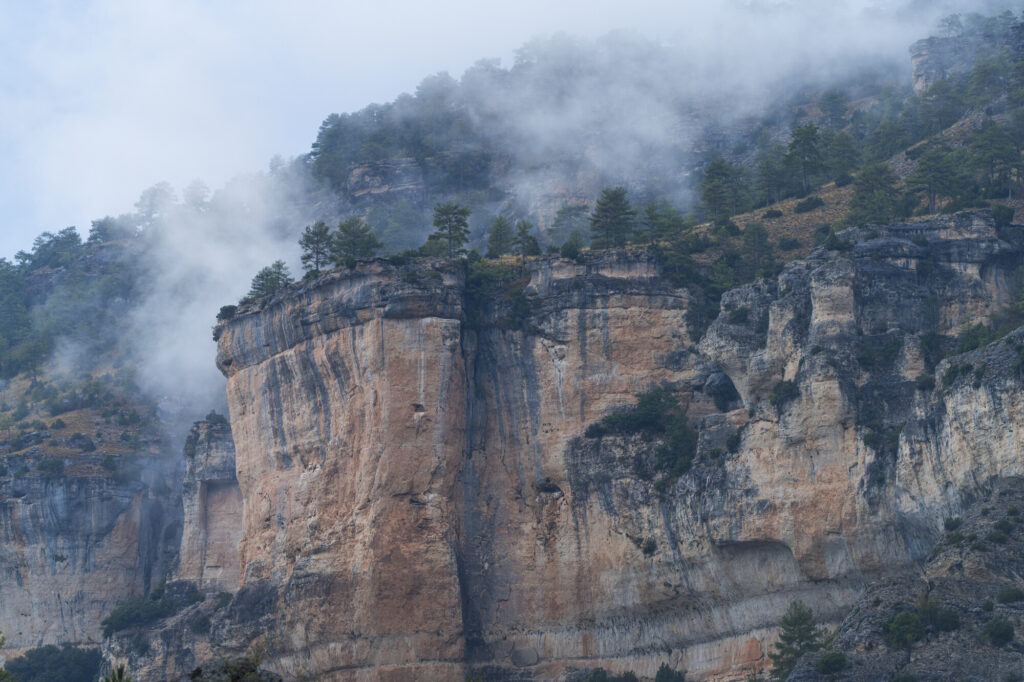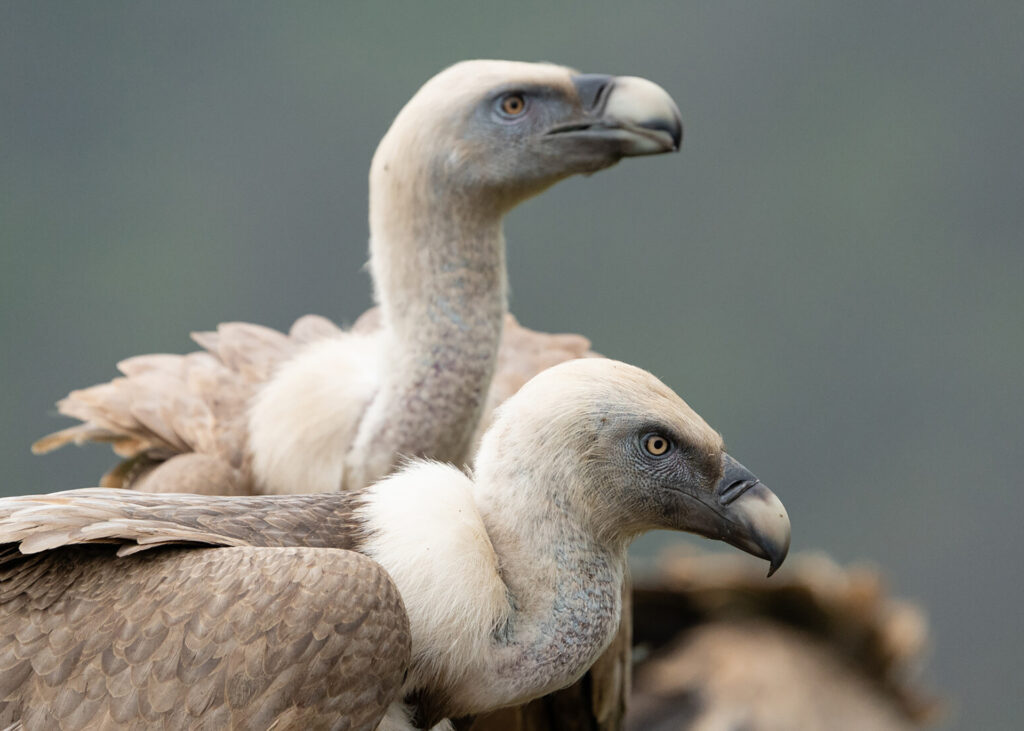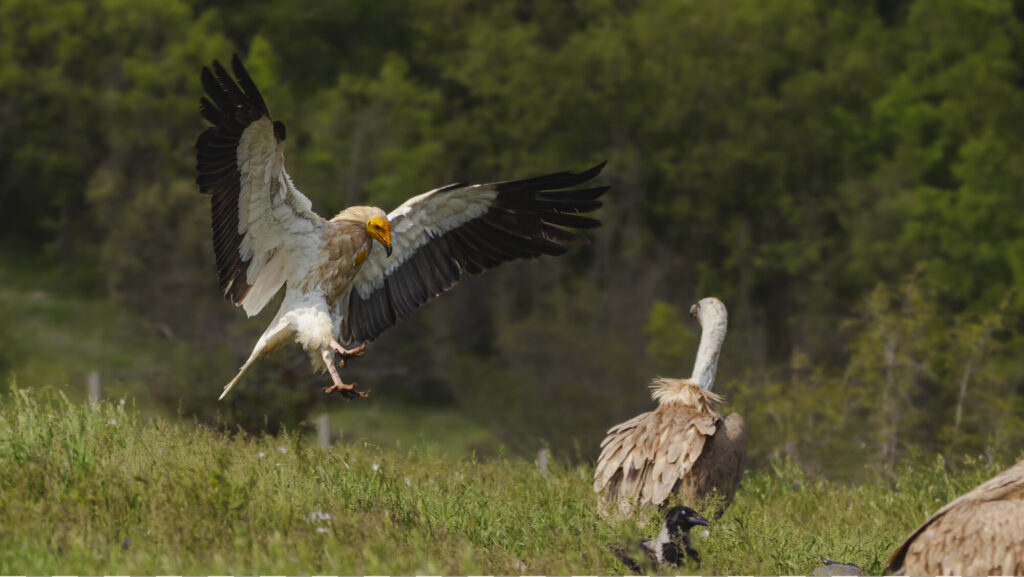The “Reintroduction of Vultures in Madonie, Sicily” initiative is working to bring back griffon vultures in the Madonie Regional Natural Park in north-central Sicily. Membership of the European Rewilding Network will enhance its rewilding efforts.

An ambitious goal
The “Reintroduction of Vultures in Madonie, Sicily” initiative is a collaboration between the Experimental Zooprophylactic Institute of Sicily (IZS Sicily) and a range of partners. Its aim is to bring back griffon vultures in the Madonie Regional Natural Park, which is located on the northern coast of Sicily, about 70 kilometres east of the city of Palermo. The species disappeared from the park in the 1950s. The initiative is also working towards the reintroduction of Egyptian vultures in the park.
With other members involved in the reintroduction of vulture species, the inclusion of the Italian initiative will strengthen the network’s collective expertise and help the Sicilian team. The network now boasts 90 members, with membership across 28 European countries.
“We are honoured and excited to be joining the network, which has always had a goal of protecting and enhancing European biodiversity through rewilding,” says Dr. Salvatore Seminara, Commissioner of IZS Sicily. “The restoration of a second colony of griffon vultures on the largest island in the Mediterranean, and the strengthening of small populations of Egyptian vultures present in Sicily, are both ambitious goals. Being part of a highly experienced and supportive network will make a big difference as we work towards them.”
The return to Madonie
Griffon vultures were once common in Sicily, but were driven to extinction in 1965, largely due to poisoning, persecution and decreased availability of food. In 1998, a reintroduction programme was established, which involved the release of griffon vultures in both the Madonie Regional Natural Park and the Nebrodi Regional Natural Park. The initiative was continued exclusively in Nebrodi, with the release of approximately 80 birds from Spain over a seven-year period. Following the programme, the first two Sicilian vultures were born in the wild in 2005. There are now estimated to be around 300 vultures living in Nebrodi National Park, located to the east of Madonie Regional Natural Park.
Continuing the efforts begun in 1998, the Reintroduction of Vultures in Madonie, Sicily initiative released 30 griffon vultures between September 2021 and February 2023 in Madonie Regional Natural Park. The birds, which had been found in poor health in Nebrodi Regional Natural Park, were rehabilitated in purpose-built aviaries, before being set free close to Pizzo Carbonara, the second-highest peak on the island. The aim of the initiative is to enhance the existing population in Madonie and expand its range, which will strengthen local food webs and benefit local communities by supporting the development of nature-based tourism. Another 16 griffon vultures were brought from Spain in 2023 and are currently being prepared for release in Madonie at the beginning of 2024, with a total of 60 birds slated for release over the next three years.

Comprehensive support
The vultures reintroduced to Madonie are allowed to acclimatise to the area in a purpose-built aviary before their release. There are a number of cliffs close by which are suitable for roosting and nesting, while a supplementary feeding station maintained by the rewilding team supports the birds and encourages them to settle in the park. By March 2023, the number of griffon vultures frequenting the feeding station site at the same time ranged from six to 12 individuals.
Madonie Regional Natural Park is characterised by traditional pastoralism, with herds of livestock raised on wild pastures. The park is also home to numerous wild herbivores, such as fallow deer and wild boar. These conditions ensure the constant presence of carcasses from selective, park management-controlled culling using non-toxic, lead-free ammunition, as well as accidental and natural deaths. This is essential to ensure the permanent settlement of vultures in the area, given the lack of major predators in the area.
The recovery of an iconic and ecologically important species
The griffon vulture is one of Europe’s most impressive birds, with a wingspan of nearly three metres. It is also a keystone species, helping to recycle the carcasses of wild and domesticated herbivores as part of the so-called “circle of life“.
Historically, in Italy, the griffon vulture bred in Sicily, Sardinia and, probably, in various parts of the Alps, the Apennines, and other suitable areas. As in Sicily, the entire Italian griffon vulture population underwent a marked decline in the twentieth century, largely due to poisoning, persecution, and decreasing availability of food. Despite its catastrophic impact on Asian vulture populations in the 1990s, veterinary diclofenac – which can induce kidney failure in vultures who ingest it from livestock carcasses – is still used and marketed in countries such as Spain and Italy.
Between 1992 and 2018, more than 400 griffon vultures were released in Italy. As a result of such reintroduction programmes, the number in Italy has gradually increased, reaching 800 – 1000 birds, with some 200 breeding pairs.

The bigger picture
As in Sicily, Europe’s vulture populations all suffered a widespread decline in the twentieth century. While reintroductions and species protection mean they are now making a gradual recovery, continued support is essential.
From late 2020, the Rewilding Apennines team have been working to support and enhance the griffon vulture population in the Central Apennines, as part of efforts to support wildlife comeback and the development of a wilder, more functional landscape. The team have organised a number of events focused on raising awareness of griffon vultures and griffon vulture conservation.
Like the griffon vulture, the Egyptian vulture is also making a comeback in Italy, although numbers are still very low, with around 10 pairs in the far south of the peninsula and on Sicily. The “Reintroduction of Vultures in Madonie, Sicily” initiative – which was set up the Experimental Zooprophylactic Institute of Sicily, in collaboration with the Department of Territory and Environment of the Sicily Region, the Nebrodi and Madonie Parks, the Rotary International 2110 district of Sicily and Malta, and the Municipality of Isnello – is also working towards the reintroduction of this iconic species in Madonie.

Join the network
Rewilding Europe extends a warm welcome to all European rewilding initiatives that focus on practical, result-oriented rewilding and encourages them to apply for European Rewilding Network membership.
